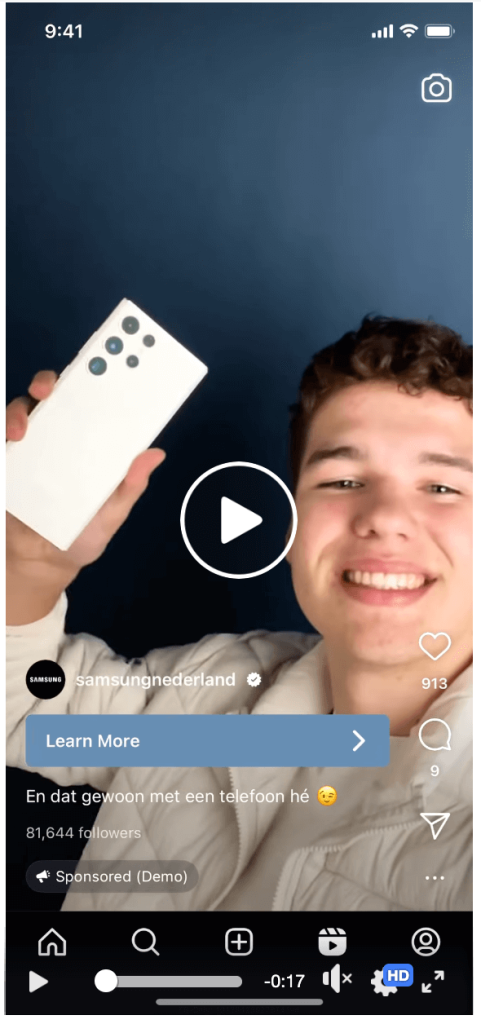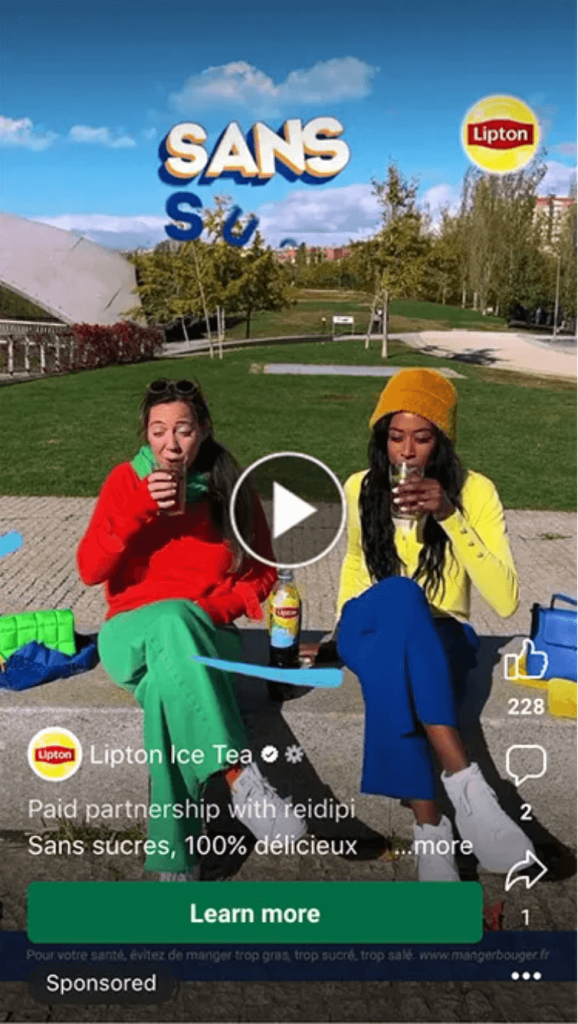Your Guide to Brand Advertising in 2025: How to Make it Work and Measure Impact
While most ads aim directly at customers’ wallets, brand ads aim for their hearts – at least, at first. By fostering emotional connections, brand advertising increases customer loyalty and lays the groundwork for future sales.
In this article, I explain how to launch effective brand ad campaigns and estimate their impact on brand awareness growth. You’ll learn which channels to use, gain access to useful templates, and explore emerging trends to make your strategy future-proof.
What is brand advertising?
This is the process of promoting a company’s brand through paid advertising campaigns in order to increase brand awareness. Unlike regular campaigns, these ads are mostly focused on the brand as a whole, not on a specific product.
Another distinguishing feature is that, typically, brand advertising is not meant to produce an immediate result, such as a sales increase. Its focus is on long-term, strategic goals, such as boosting brand recognition and building customer loyalty.
The core objectives of brand advertising campaigns
- Increasing brand awareness. As a result of a successful ad campaign, more people become aware that your brand exists and have an idea of what it has to offer. Brand awareness is closely linked to brand recognition and brand recall. The latter indicates how often potential customers remember your brand when they need to buy a specific product.
- Crystallizing brand identity. Even if you have your unique selling points listed on your website, that may not be enough. In addition to rational arguments, customers may also need an emotional connection – a reason to like you. Your brand’s values, personality, and what the brand stands for are all important in this. When you know your audience well, you can make sure your values align with theirs and communicate this in an ad campaign.
- Differentiating from competitors. There are probably dozens of companies that offer products or services very similar to yours. So in order to attract a customer, you need to clearly communicate why they should buy from you and not somebody else. Running brand ads is a great way to share your vision and set your brand apart from the competition.
- Building brand loyalty. Multiple studies on social psychology have found that people tend to much prefer things and people that are familiar to them. Therefore, brand presence is important for creating and maintaining brand loyalty. It’s a special relationship with a customer when they strongly prefer your brand to the competitors. This concept is central to customer retention and greatly helps to increase customer lifetime value.
- Supporting long-term success. Increasing brand awareness or strengthening brand identity doesn’t yield an instant return on investment. However, these advertising efforts lay the foundation for long-term effects, such as making your customers recall your brand at the purchase consideration stage or encouraging them to recommend it to friends or relatives. So, eventually, brand advertising converts into purchases, if approached systematically and strategically.
All this helps you shape your potential customers’ purchasing preferences, habits, and behaviors in favor of your brand. This supports sustainable growth in the long run.
Types of brand advertising and channels to use
Brand ad types can be grouped by the channel where they run. These are so-called “traditional channels”, such as OOH (out-of-home) or print, and digital channels, such as social media. In this article, we mostly focus on brand advertising on digital channels. They offer a lot of flexibility and let you easily reach audiences around the world.
- Social media ads. These are images, videos, stories or interactive shopping experiences used to advertise your brand on social media networks, such as Facebook, Instagram, or LinkedIn.
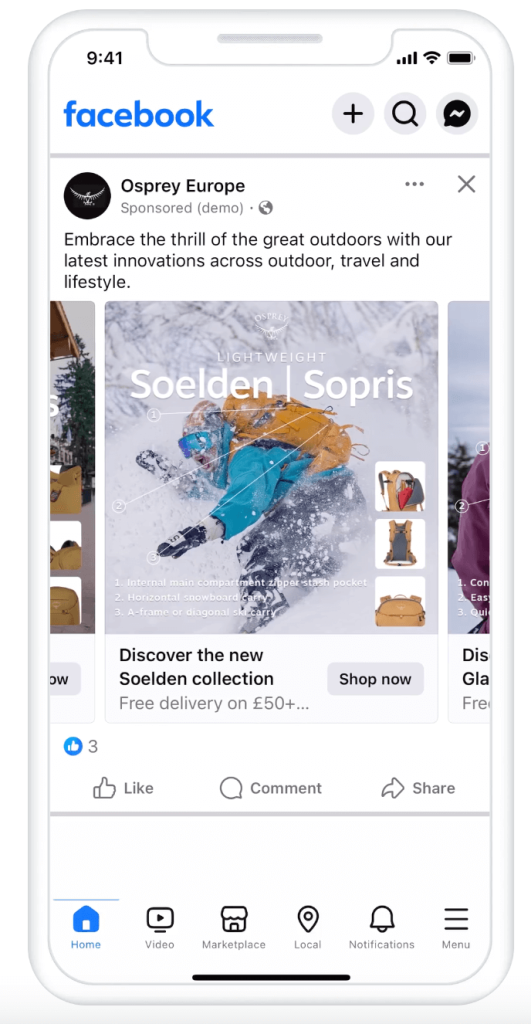
- Video ads. Although this can also be placed in the social media ad category, video ads deserve their own mention. Especially, considering the expansion of video content as one of the top digital marketing trends. The importance of visual communication has increased dramatically over the last few years, with platforms such as TikTok and YouTube taking the central stage. Short videos and stories are popular and highly effective formats for brand advertising. YouTube videos have a huge potential as well, considering that people are now even using YouTube as a search engine.
- Display advertising. These are ads in the form of animated banners, static images, or short videos displayed on various websites, mostly through Google Display Network.
- Search engine ads. People see these when they search for keywords online – these are ads shown at the top of the search results. The biggest platforms for search engine ads are Google Ads and Microsoft Ads (formerly Bing Ads).
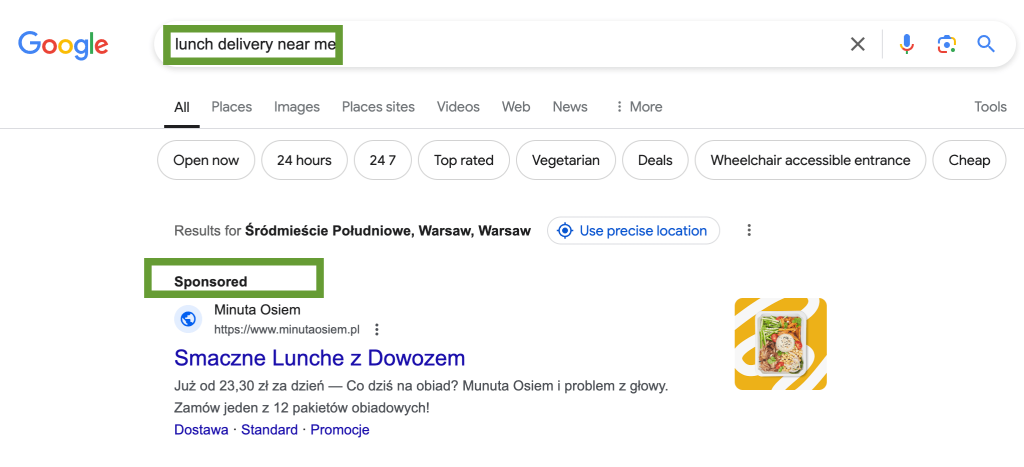
- Native advertising. This refers to when your brand or product is mentioned in content natively in an unobtrusive, organic way. This can be achieved when the product or message is aligned with the topic of the content piece and can be mentioned naturally because of its relevance. One of the best channels to use for this ad type is a blog covering various topics. Another option is collaboration with influencers that can natively advertise your brand in their content.
- Traditional advertising. TV and radio commercials, outdoor ads such as billboards or citylights, and ads in printed press are all examples of traditional brand advertising channels. Sponsorship and partnership can also be included in this category. Traditional ads are a good option if you are targeting people in a specific geographic area or have a solid ad budget.
How to make your brand ads effective: best practices
Ensure consistency across channels
Your brand advertising campaigns might include multiple projects and run on numerous channels. For example, you can promote the same offer on social media and in display ads. However, it’s important to ensure that messaging, brand positioning, visual elements, and user experience remain consistent. No matter where a customer sees your ad, they should perceive your brand in the same way. This will help you create and maintain a distinct brand identity and improve brand recognition.
Produce authentic content
In recent years, Instagram and TikTok have democratized content creation further than ever before. Users can now record videos on the go and instantly post them, often with no or little editing. Despite imperfections, these videos look authentic and natural. To build a meaningful online presence, brands should adapt to this trend.
Sleek and polished high-budget ads on social media don’t always fulfill their purpose. Users easily identify them as ads and tend to ignore them. People value authenticity, stories with real humans at the center, and sincerity. Keep this in mind when creating reels and stories for your brand advertising campaign. Many brands sacrifice beautiful pictures and elaborate scripts and shoot simple videos, sometimes even on a mobile phone to make the ads appear like user-generated content. This gives you the freedom to instantly react to trends and talk to the audience in their language.
In this example, you can see an authentic-looking Facebook Reels ad by Samsung Netherlands.
Place human insight at the center
Even brand ads should be more about people than the brand. Focus on your audience and their needs, learn everything about their demographics, and conduct market research to see what you can do for them. What pain points do they have, and what challenges do they face? What situations or experiences are typical for them? When your audience recognizes themselves in your ads, they are more likely to feel connected and perceive an ad as relevant.
Demonstrate how your brand can be a part of their lives, what positive impacts it can have, and what it can help them with. If you base your ad creatives on real human insights, your campaign will be much more powerful and convert better. In short, it should be the real deal.
In the example above, you see a video natively promoting Coupler.io. This YouTube short is centered around a real user’s experience, highlighting the emotional aspect of the pain point and solution.
Establish emotional connection
Although rational persuasion is also often used in brand ads, the emotional approach is still the most common for this type of campaign. You can use humor to make your audience laugh, inspire them, or cheer them up, or even tap into less pleasant emotions, especially if your brand offers a solution.
Emotionally vivid ads are more memorable and are more likely to spark conversation online or go viral. For brand advertising, it’s especially important to elicit an emotional response from the audience as this helps forge a meaningful connection with the brand and build loyalty.
Leverage visual storytelling
As global culture becomes increasingly visual, presenting your brand through memorable visual stories is a must. Make sure to include platforms such as TikTok, YouTube, and Instagram in your brand advertising strategy. It’s worth experimenting with various formats: reels, shorts, stories, in-stream ads, etc. Employ different storytelling techniques and frameworks, such as a three-act structure with an exposition/problem setting, conflict culmination/confrontation, and conflict resolution. Tell your brand’s story in a persuasive and engaging way.
As users often play videos without sound, it may not be possible to set the mood with emotional music or a friendly voice. Double-check that your video conveys the right message even if watched muted. Depending on the campaign’s creative idea, you can consider showing your brand’s products in action and making them an essential part of the story.
In the example above, you can see a reel ad by Lipton Ice Tea. The ad has attention-grabbing vivid colours, looks authentic, and starts with an action scene – we see something is going on and are curious to watch the story.
Use localization and personalization
Currently, personalization is one of the most important trends in advertising. Instead of one generic campaign, you can launch multiple tailored campaigns targeted at different regions. While it’s important to maintain consistency and stay on-brand, there’s nothing wrong with customizing your approach for different audiences.
Pay attention to cultural nuances, follow trends and events that are on everyone’s mind in a specific region, and so on. It doesn’t necessarily have to be about different countries – the same goes for different cities or, sometimes, even city districts. Your audience will appreciate a personal touch and acknowledging their uniqueness. This will increase the relevance of your brand message and make it easier to forge an emotional bond with your customers.
Measure and test
To make progress, you must know where you stand and what drives results. You will need to collect and analyze data on your brand campaigns to see how exactly they impact awareness, to identify best practices, and scale success. Running experiments and A/B testing are a great way to refine your brand marketing strategy. This allows you to find the most effective CTAs, creatives, targeting settings, and bidding approaches.
Learn more about brand marketing vs. performance marketing.
Brand advertising measurement: evaluating effectiveness
Unlike most other marketing metrics, brand awareness can’t be measured directly or calculated with a standard formula. This metric can only be gauged through indirect indicators, such as brand mentions on social media or changes in how often people are searching for your brand name online. To assess the effectiveness of your brand ads, you need to look at a combination of various other marketing metrics and see how they correlate with your ad campaigns.
Here are the main metrics that help you estimate the effectiveness of your brand ads.
| Metric | Data source | How to use |
| Branded search volume | – Google Keyword Planner- Ahrefs | This metric measures how actively users google your brand or look for for information about it on other search engines. You can check how it changes after you run a brand ads campaign. |
| Branded impressions | Google Search Console | When your website is shown in the search results for branded searches, this counts as a branded impression. Like the previous metric, you need to check how/whether it changes after an ad campaign. |
| Direct website traffic to the homepage | Google Analytics 4 | This is an indicator of how many people access your website through a direct link. An increase in such traffic may be a sign of brand awareness growth. |
| Earned media coverage | – Brand 24- Other social media listening tools | Earned media coverage counts all instances when your brand is mentioned on various platforms – typically in a positive manner. This includes favorable reviews, influencer publications, or featuring in mass media. An increase in media coverage can also be an indirect indicator of an increase in brand awareness. |
| Social media reach and impressions | – LinkedIn Ads- Facebook Ads- Other social media platforms | These digital marketing metrics reflect the number of people who saw your branded content and the number of times such content was shown to users. If you see a growth here, it can be a positive sign. However, it’s also useful to check CTR (click-through rate) and make sure impressions correlate with user interest. |
| Social media engagement | Social media analytics platforms | Here, you need to look for changes in brand-related user activity on social media. For example, reactions, reposts, or comments on your brand pages. However, make sure those interactions are not negative. |
| Brand mentions on social media | Social media analytics platforms | Various social media listening tools can collect data on how often your brand is tagged, mentioned, or appears as a hashtag on various platforms. Such tools can also provide information on social media sentiment so that you can assess whether the conversations around your brand are positive or not. |
| Share of voice (SOV) | Brand mention tools | This shows how your presence in a niche compares to that of your competitor’s. To calculate the metric, divide the number of your brand mentions by the number of market competitors mentions and multiply the result by 100. This gives you an understanding of how successful your marketing efforts are in terms of creating brand visibility. |
| Brand lift | – Facebook Ads- Instagram Ads- YouTube | Some platforms let you run brand lift campaigns, which are followed by a survey asking your audience whether they recall seeing your ads. It’s also possible to add other brand-related questions. Once you get the results, you will know how many points of brand lift the campaign brought you. |
To learn more about measuring the effectiveness of brand ads, data sources, and metrics to use, have a look at our article How to Build Your Brand Awareness Dashboard.
As you can see from the table above, you will need to collect information from multiple sources before you can get a consolidated view. Then, you can analyze and interpret it in order to estimate changes in brand awareness.
However, there are analytical solutions that let you cut some corners and simplify this process a bit.
A ready analytical solution: brand awareness dashboards
Here are free dashboard templates that let you evaluate how your brand advertising campaigns impact brand awareness. They display ad data along with the information from Google Search Console, allowing you to see how they correlate.
These dashboards are live and get updated automatically thanks to Coupler.io, a reporting automation platform for marketers. This solution streamlines data collection from advertising tools and GSC. The templates are built in popular BI tools and are fully customizable.
Brand Awareness Dashboard template
With this dashboard, marketers can monitor how effectively ad spend translates into brand awareness. It also lets you track changes over time and keep tabs on key metrics, such as total ad impressions, branded impressions, and clicks.
This template automatically collects data from GSC and three advertising platforms – Google Ads, Facebook Ads, and Microsoft Ads.
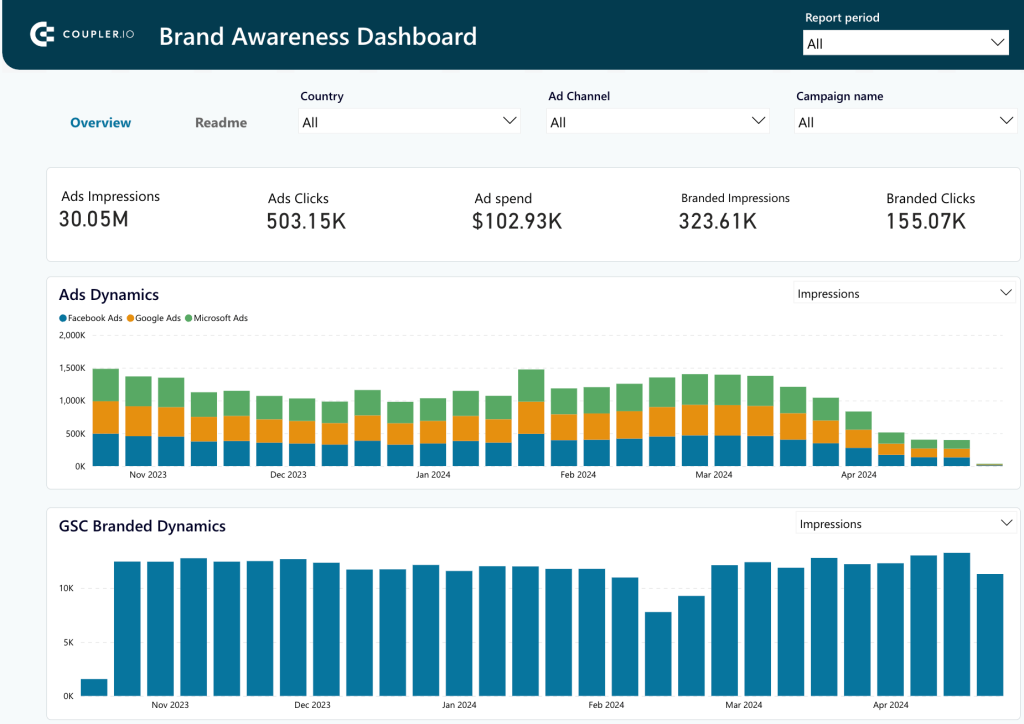
Thanks to the set of filters included in the dashboard, it’s easy to analyze data from various angles. It can be filtered by date, metric, ad channel, and country. This allows you to evaluate geographical performance and see which countries demonstrate the best results.
Analyzing awareness metrics by campaign, you can identify the best-performing projects and allocate more ad budget to campaigns that drive results.
The stacked bar chart with ad channel data also lets you see at a glance how different PPC platforms contribute to paid impressions.
By comparing the two bar charts, you can check if there are any correlations between paid impressions, clicks, and ad spend, and branded impressions and clicks. This gives you an understanding of how your ad campaigns increase brand awareness.
Please note that the impact of brand advertising campaigns on branded traffic can sometimes only be seen after a couple of weeks or even months.
This free template is designed in Power BI. To start using it, open the template and follow the instructions on the Readme tab. You will need to connect Google Search Console and the ad platforms and specify your brand name.
Facebook Ads & Brand Awareness Dashboard template
This dashboard works in the same way as the previous one, but the main difference is that it displays data from just two data sources: Facebook Ads and GSC. In addition, it’s designed in a different BI tool, Looker Studio. Just like the first template, this one also lets you estimate how your brand advertising campaigns impact branded keyword searches over time.
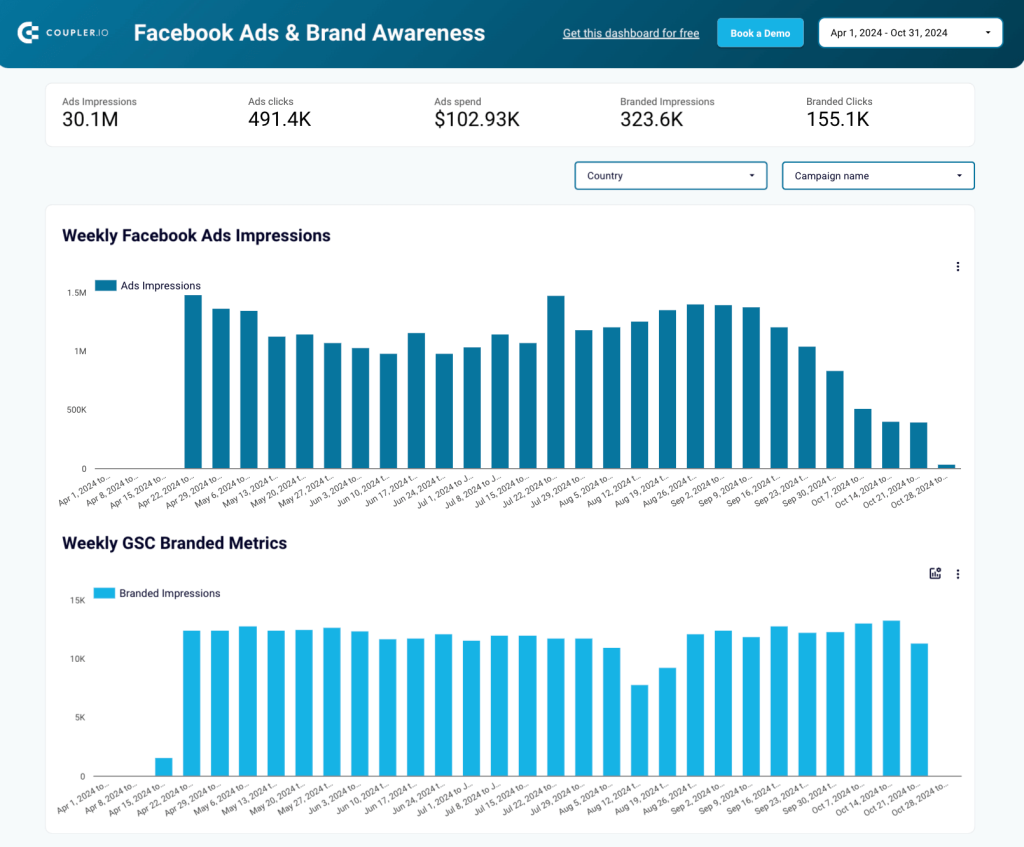
If you run brand ads for global companies and leverage seven-digit budgets, then, you will be able to see the impact on a global scale. For smaller brands, to see the correlations, use filters to pick the countries where you run your biggest campaigns. Then, select the time period you are interested in and compare the graphs.
With successful brand ads campaigns, you will see how a spike in ad activity (impressions, clicks, or budget increase) is later mirrored by a similar spike in branded impressions and clicks. As we already mentioned, the impact may take some time to manifest – usually up to several weeks.
This free template is built in Looker Studio and can be easily customized with the BI tool’s native functionality. To get a copy of this dashboard with your data, open the template and follow the instructions on the Readme tab. You will just need to plug in your Facebook Ads and GSC accounts, and your dashboard will be ready in less than 5 minutes.
Brand advertising examples: ads that people remember
There are many great brands that can serve as an inspiration for your marketing campaigns. Apple, Mcdonald’s, Coca-Cola, or Nike with its legendary “just do it” tagline – they all succeeded at building a strong brand that makes a lasting impression. With a huge base of loyal customers, success or at least a great interest in each new product is basically guaranteed.
Let’s look at several case studies demonstrating how an appealing brand image can be construed through digital advertising.
1. Dove – Real Beauty Sketches campaign
This advertising campaign is memorable for its long-term impact, strong emotional appeal to the target audience, and the model alignment with brand values.

The team behind the project asked women to describe themselves to an FBI-trained forensic artist, while placed behind the curtain to remain unseen. The artist also drew a second portrait based on how the same person was described by someone else. The difference between the two portraits revealed how women perceived their appearance in a much more critical way than other people. Dove used this campaign to promote their support of natural beauty. The message resonated with the brand’s mission to empower women to feel beautiful regardless of how they look.
This video ad was distributed through digital channels and quickly went viral. More than 50 million people viewed it within the first 12 days of its release. To date, Real Beauty Sketches has been viewed around 180 million times, which indicates a significant rise in brand awareness.
2. ClickUp – The Firing of Jira campaign
Unlike the company in the previous example, Clickup isn’t a global top-of-the-mind product, and its brand recognition was relatively low before launching this ad. However, the campaign significantly boosted awareness within the target niche. What helped it succeed was addressing the audience’s pain points with humor and a bold idea for the video. It shows ClickUp’s competitor, Jira, as an employee who is being fired for inefficient work, while ClickUp is advertised as the replacement.

Attacking a competitor in such a risky manner and the funny plot quickly got the attention of the audience, and the video became viral. As of now, this ad is no longer available on ClickUp’s YouTube channel (possibly due to legal reasons), so it’s impossible to confirm the number of views. Reportedly, it was viewed over 1 million times in just a few weeks. This daring ad sparked a conversation about the brand, increased awareness, and prompted the target audience to consider the tool.
3. Channel 4 – The Maxine’s Long Walk Home campaign
This British TV channel decided to raise brand awareness using experimental ad formats on Facebook. They launched an immersive 360 video and virtual reality experience promoting an episode of one of their top shows, Hollyoaks. The goal of the campaign was to increase Channel 4 viewership and to advertise the unique experiences the channel was offering to its audience.
The Hollyoaks episode featured in the ad tackled the issue of women’s safety. It depicted a female character from the show, Maxine, walking home alone after a night out. The five-minute footage allowed the ad viewers to “walk in Maxine’s shoes” by offering a first-person view. The ad was published as a virtual reality experience through Meta Quest and as a 360 video on Facebook. The environment within the full-screen 360 video could be manipulated and controlled by touch on a mobile.
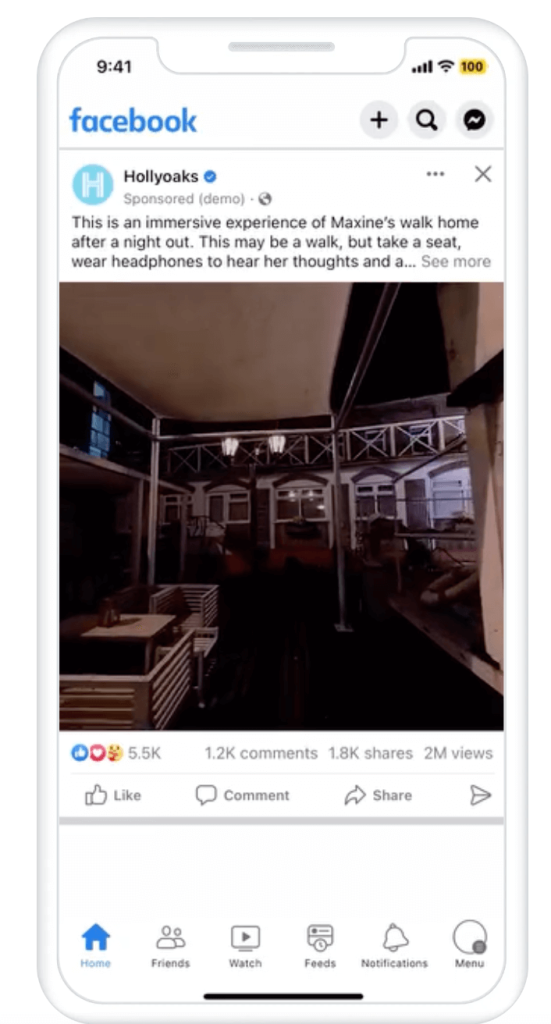
The campaign raised awareness of women’s safety issues and made “Maxine’s Long Walk Home” the most-viewed Hollyoaks episode of 2022. The ad achieved a 23.5-point lift in ad recall and brought Channel 4 a 4.7-point boost in brand awareness. The virtual reality/360 experience garnered 2 million views.
Do brand ads have a future? How the latest tech trends change brand advertising
The short answer is yes. Although businesses often focus on sales-generating campaigns, brand advertising also plays an important role and will keep its place in marketing roadmaps. The emotional connections it creates help build brand loyalty, improve the repeat purchase rate, and increase customer lifetime value. All this, in turn, results in better ROI in the long term.
The latest trends in technology, media, and social change impact the way brands communicate with their audiences. Users now expect more personalization and flexibility, are open to new shopping experiences, and place more value on social proof. Let’s explore some of the main trends influencing brand advertising.
AI and personalization
As AI is set on course to become ubiquitous, its rise comes with new challenges and opportunities for brands. AI-based solutions will significantly enhance ad personalization, which will take a central stage in the brand-customer relationship.
AI can instantly analyze user data and adapt messages, ad visuals, and even offers to a specific user’s profile, delivering a tailored experience. It can also be used for smart chatbots, introducing more interactivity for brand campaigns. AI tools can also help marketers with predictive analytics, defining the groups of users that are the most likely to convert.
The other side of this trend is user privacy concerns and skepticism regarding the quality of AI-generated content. Gartner even predicts the rise of “acoustic brands” that will position themselves as AI-free to highlight their trustworthiness. Another challenge is Google’s GenAI search. Since its introduction, businesses have experienced a decline in organic search traffic. In the context of brand advertising, this means companies will have to rely less on this channel and place more emphasis on their social media presence.
Augmented and virtual reality
AR/VR are technologies that have been around for a while but that still have not been adopted broadly. One of the reasons for this is inflexible pricing and unclear practical value. However, low adoption rates present an opportunity for brands, as the interest in AR/VR still remains high.
Virtual reality ads and immersive experiences can be a promising solution for brand awareness campaigns. They allow brands to directly engage with customers, tell powerful stories through immediate experiences, interact with users’ surroundings, introduce gamification, and more. Another distinct feature of AR/VR ad projects is their high viral potential.
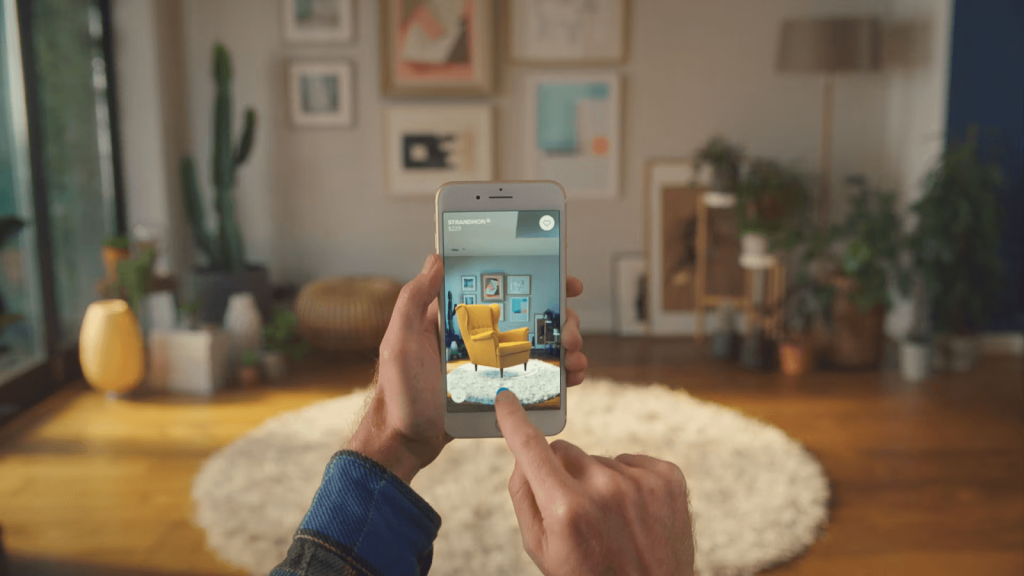
In the previous section, we gave an example of such a campaign, Channel 4’s virtual reality/360 experience brand ads. Another example is IKEA Place, an app that allows you to visualize IKEA furniture in your home to see how it fits. This simple idea literally brings the store’s brand to people’s home, enhancing the connection and promoting brand consideration.
Purpose-driven branding
As customers around the world now place more value on sustainability, businesses will need to adapt to this trend. People want to know how goods and services they purchase impact the environment, whether they are produced in a way that promotes social justice and equal opportunities, and so on. Businesses can respond to this with purpose-driven branding – a strategy where a company commits to an environmental or societal cause in the long-term, and this commitment becomes a part of the brand mission and brand identity.
A global study from Microsoft Advertising and Dentsu International found that consumers are willing to switch brands if they discover a more sustainable alternative. This makes purpose-driven branding vital for shaping a competitive offer. Brands can join global sustainability projects, such as Fair Trade, or develop their own initiatives.
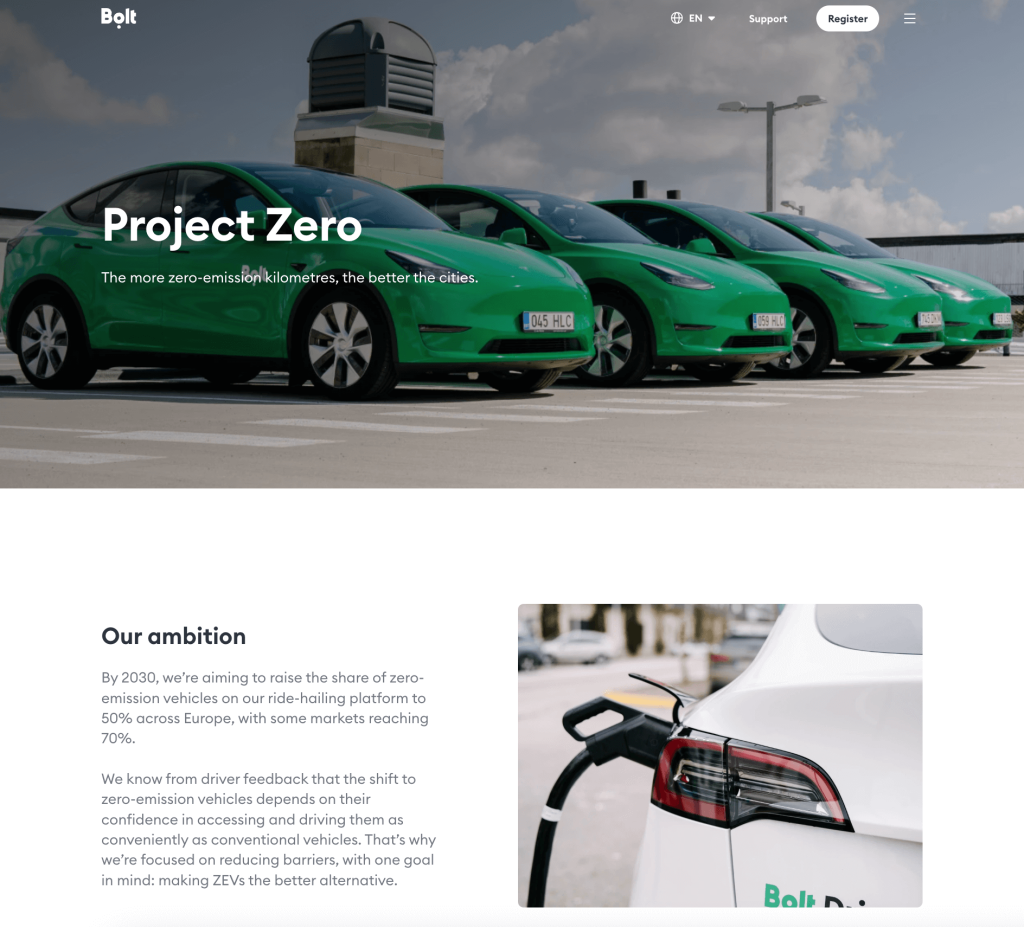
For example, Bolt announced Project Zero, which focuses on cutting greenhouse gas emissions from the company’s operations. The brand pledged to reach net-zero carbon emissions by 2040 and stated interim goals for 2030, elaborating on the steps it’s going to take to realize this plan.
This illustrates one of the most distinctive features of purpose-driven branding – setting clear goals and developing a feasible implementation plan. Apart from environmental projects, brands can take action to promote equality and diversity or contribute to community development.
Influencer marketing evolution
In the past, brands mostly turned to celebrities for endorsements and to deliver social proof to their audiences. When social networks started playing a bigger role, this approach evolved into a more democratized format. Anyone who managed to build a significant following could be a valuable partner for brand promotion.
Now, the focus is shifting to micro-influencers (10-100K followers) and even nano-influencers (less than 10K followers). They help businesses reach niche audiences that are not easy to access through other channels. Such smaller communities are often more engaged, loyal, and trust recommendations more.
Authentic original content will remain at the core of collaborations with influencers. They make unboxing videos, reviews, guides, and various entertaining content, where brands are mentioned natively. Video content is one of the most promising formats, along with live streams, shopping events, and shoppable content. For purpose-driven brands, influencer support will play a major role. Another important direction will be launching affiliate programs for influencers, allowing them to earn a commission from the purchases they generate.
With all these trends impacting the marketing landscape, brand teams will receive new instruments for building long-lasting connections with their customers.
For more tips on brand advertising, have a look at our articles How to measure brand awareness and Brand awareness dashboard.
Automate reporting with Coupler.io
Get started for free
